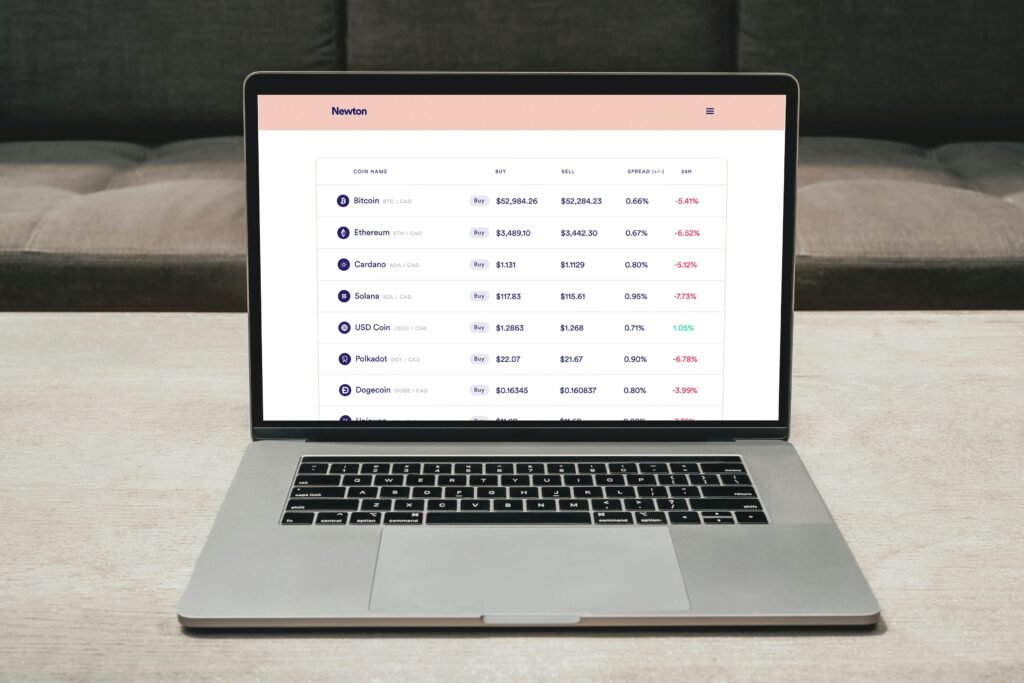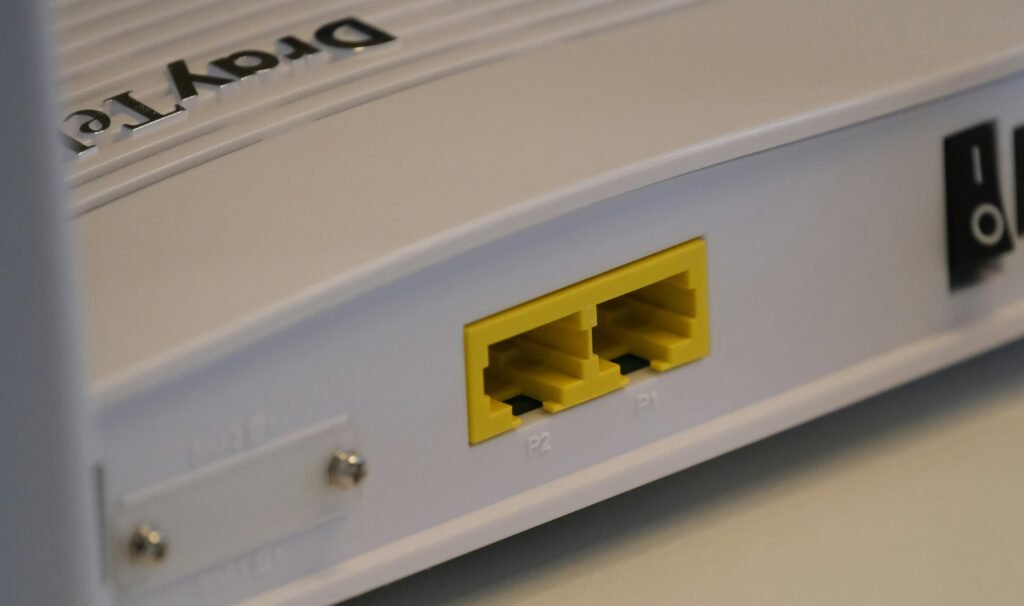Introduction to Blockchain Technology
Blockchain technology is a decentralized digital ledger that records transactions across multiple computers. This system ensures that once data is entered, it cannot be altered retroactively without the consensus of the network. By enabling transparency, security, and immutability, blockchain has transformed various sectors, including finance, supply chain, and healthcare. At its core, blockchain operates through a network of nodes that validate and confirm transactions, ensuring that all participants have access to the same information without the need for a central authority.
The significance of blockchain technology extends beyond its foundational structure; it reflects a shift toward decentralized systems in our increasingly digitized world. As businesses and users adopt digital currencies and decentralized applications, they are drawn to blockchain’s potential for increased efficiency and security in their operations. However, as the user base and transaction volumes expand, scalability becomes a pressing challenge, placing strain on the existing infrastructure of blockchain networks.
Scalability refers to the ability of a blockchain network to accommodate a growing number of transactions efficiently. As the number of participants in a blockchain increases, the volume of transactions can lead to congestion, resulting in slower processing times and higher fees. This challenge has prompted the exploration of both Layer 1 and Layer 2 solutions, which aim to enhance the capacity of blockchain networks while maintaining their core principles of decentralization and security. Understanding these concepts is crucial for grasping the evolution of blockchain technology and its applications in the modern digital landscape.
Understanding Layer 1 Solutions
Layer 1 solutions represent the foundational layer of a blockchain network, functioning directly on the base layer of the blockchain architecture. These solutions are integral to the network’s core operations, encompassing features such as consensus mechanisms, transaction verification, and the original protocol rules. Their design and execution dictate the overall performance, security, and scalability of the blockchain.
One notable characteristic of Layer 1 solutions is their ability to handle transactions natively, without the necessity for secondary layers or additional protocols. For instance, Bitcoin, the first cryptocurrency, operates as a Layer 1 solution that employs a Proof of Work consensus mechanism to validate transactions and secure the network. Each transaction on the Bitcoin blockchain is directly recorded on its ledger, ensuring a high level of transparency and immutability.
In contrast, Ethereum presents a more advanced Layer 1 structure, facilitating not only cryptocurrency transactions but also executing smart contracts that enable decentralized applications (dApps). The Ethereum blockchain utilises a Proof of Stake consensus mechanism with its ongoing upgrades aimed at scalability and energy efficiency. This flexibility attracts developers and fosters innovation within its ecosystem, illustrating how Layer 1 solutions can cater to diverse use cases.
The operational dynamics of Layer 1 solutions underscore their importance in the blockchain landscape. These solutions lay the groundwork for transaction integrity and security, shaping the user experience in decentralized systems. Given their nature, Layer 1 blockchains must continually evolve to address challenges related to speed and capacity, ensuring they can adequately support growing demand and complexity in the digital transaction space.
Examining Layer 2 Solutions
Layer 2 solutions represent an innovative approach to enhancing the functionality and efficiency of blockchain networks. Built atop existing Layer 1 blockchains, these solutions aim to address the inherent limitations related to scalability and transaction speed that often plague foundational networks like Bitcoin or Ethereum. By establishing secondary protocols or networks that leverage the security and decentralization of Layer 1, Layer 2 solutions enable a higher throughput of transactions without congesting the primary blockchain.
One of the most notable examples of a Layer 2 solution is the Lightning Network, which is designed for the Bitcoin ecosystem. It allows users to create off-chain payment channels that facilitate instant transactions between parties. Once the transactions are completed off-chain, the final state is then recorded back onto the Bitcoin blockchain. This method significantly reduces transaction fees and enhances speed, making microtransactions viable, something that is challenging to achieve directly on Layer 1.
Another significant class of Layer 2 solutions is Rollups, which bundle multiple transactions into a single batch that is processed on the Layer 1 chain. There are two primary types of Rollups: Optimistic Rollups and Zero-Knowledge Rollups. Optimistic Rollups assume validity by default, only checking the validity of transactions when a fraud proof is presented, while Zero-Knowledge Rollups utilize cryptographic proofs to validate the entire batch of transactions off-chain before submitting to Layer 1. Both methods contribute to reduced congestion on Layer 1 networks while ensuring security and decentralization remain intact.
In essence, Layer 2 solutions are pivotal in the evolution of blockchain technology, as they provide paths toward increased transaction efficiency and scalability without sacrificing the core principles of decentralization and security inherent in Layer 1 solutions. Their implementation is critical, especially considering the growing demand for blockchain applications that require efficient handling of large-scale transactions.
Key Differences Between Layer 1 and Layer 2 Solutions
Layer 1 and Layer 2 solutions serve crucial roles in the blockchain ecosystem, but they operate on distinct principles and functionalities. Layer 1 refers to the base level of a blockchain architecture, encompassing the main blockchain protocol and its inherent capabilities. In contrast, Layer 2 denotes secondary frameworks built atop Layer 1, aiming to enhance the base layer’s efficiency, scalability, and performance.
Functionality is a notable difference between the two layers. Layer 1 solutions typically handle transaction validation, block creation, and decentralized consensus within the network. Examples include Bitcoin and Ethereum, where the platform’s functionality is directly tied to the base layer. Layer 2 solutions, on the other hand, facilitate faster transactions and greater throughput without altering the underlying blockchain protocol. Prominent examples include the Lightning Network for Bitcoin and various scaling solutions like Optimistic Rollups for Ethereum.
When comparing scalability, Layer 1 has inherent limitations due to the constraints of its consensus mechanism. Increasing transaction throughput often results in network congestion and elevated fees during peak demand. Conversely, Layer 2 solutions can significantly enhance scalability by processing transactions off the main chain, thereby alleviating congestion and minimizing costs associated with transactions. This mechanism allows for a larger volume of transactions to be conducted more swiftly and efficiently, demonstrating a marked improvement in user experience.
Transaction speed further distinguishes the two layers. Layer 1 solutions can experience delays due to block confirmation times and validators’ processes, which may vary in duration depending on network conditions. In contrast, Layer 2 solutions expedite the transaction process by allowing off-chain validations, leading to quicker confirmation times and reducing the cost per transaction. Thus, while both Layer 1 and Layer 2 solutions strive to improve blockchain scalability, they do so through fundamentally different approaches that cater to diverse user needs and operational efficiency.
Pros and Cons of Layer 1 Solutions
Layer 1 solutions, which include foundational blockchain protocols like Bitcoin and Ethereum, offer unique advantages and challenges that shape their usability and effectiveness. One significant benefit of Layer 1 solutions is their enhanced security. Since they operate on the base layer of blockchain technology, they leverage the entire network’s decentralized structure, making them inherently resistant to attacks. This decentralization ensures that control is distributed among many participants, reducing the risk of a single point of failure.
Another advantage lies in the simplicity of transactions on Layer 1. Direct interactions at the base level often translate to clearer audit trails and transparency, appealing to users who prioritize trust. Additionally, Layer 1 solutions generally provide a more robust ecosystem for smart contracts and decentralized applications, as changes to the base layer affect all transactions and applications built on top of it. Furthermore, the significant network effects associated with established Layer 1 blockchains can foster a larger user base and more extensive developer engagement, promoting innovation.
Despite these advantages, Layer 1 solutions face several challenges, particularly regarding scalability. As adoption grows, so does network congestion, often leading to slower transaction speeds and higher fees. These limitations prompt some developers and projects to explore Layer 2 solutions as a means to enhance performance without compromising security. Moreover, the immutability of Layer 1 can be a double-edged sword; while it guarantees security, it also limits the flexibility needed to adapt to changing needs or rectify systemic issues.
In considering Layer 1 solutions, stakeholders must weigh their clear benefits against the significant challenges, particularly around scalability and flexibility, which can influence the overall effectiveness of the blockchain ecosystem.
Pros and Cons of Layer 2 Solutions
Layer 2 solutions have emerged as critical enhancements to blockchain networks, specifically designed to address scalability issues faced by Layer 1 solutions. These solutions can significantly improve transaction throughput and lower costs, facilitating a more efficient blockchain experience. However, they also come with their fair share of drawbacks, which are essential to consider when evaluating their practicality.
One of the most notable advantages of Layer 2 solutions is their ability to increase transaction speeds. By processing transactions off the main blockchain (Layer 1), Layer 2 solutions can reduce congestion during peak usage times. This attribute is particularly beneficial for applications that require fast, high-frequency transactions, such as decentralized finance (DeFi) platforms and non-fungible tokens (NFTs). Additionally, as transaction costs can be significantly reduced due to fewer congested transactions, users benefit from lower fees, making cryptocurrency transactions more economically viable.
Layer 2 solutions can also facilitate interoperability between different blockchain networks, allowing users to transact seamlessly across platforms. This cross-chain functionality enhances user experiences and promotes broader adoption of blockchain technology. Furthermore, many Layer 2 protocols integrate advanced features such as enhanced security measures and privacy options, providing users with more control over their transactions.
Despite these benefits, there are inherent risks associated with Layer 2 solutions. For example, they may introduce complexities that could lead to security vulnerabilities if not properly implemented. Additionally, reliance on third-party protocols can create a dependency that might expose users to risks associated with these external systems. Moreover, there may be challenges concerning data integrity and finality, as transactions processed on Layer 2 must eventually be settled back on Layer 1.
In conclusion, while Layer 2 solutions present numerous advantages, particularly in terms of speed and cost, it is crucial for users to remain aware of the associated risks and challenges that may arise from their adoption.
Use Cases for Layer 1 and Layer 2 Solutions
Layer 1 and Layer 2 solutions have emerged as vital components in the blockchain ecosystem, each catering to specific needs and functionalities. Layer 1 solutions, which include foundational protocols like Bitcoin and Ethereum, serve as the fundamental network structures that facilitate transactions and smart contract executions. Real-world use cases for Layer 1 are evident in applications ranging from currency transfers to decentralized finance (DeFi) platforms. For example, Bitcoin enables users to send money across borders swiftly and securely, addressing the need for a decentralized currency with limited intermediaries.
On the other hand, Layer 2 solutions extend the capabilities of Layer 1 networks, addressing inherent scalability issues while enhancing transaction speed and reducing costs. One prominent Layer 2 solution is the Lightning Network, which operates on top of the Bitcoin blockchain. It facilitates nearly instantaneous transactions with significantly reduced fees, making microtransactions feasible for everyday retail settings. This scalability extension illustrates how Layer 2 can adequately meet the demands of increasing transaction volumes without straining the underlying Layer 1 protocol.
Similarly, Ethereum’s rollups stand as another effective example of Layer 2 technology, consolidating multiple transactions into a single batch and only recording the final state on the Ethereum blockchain. This approach not only enhances efficiency but also significantly decreases the gas fees associated with transactions, making DeFi applications accessible to a broader audience. Other examples include gaming and non-fungible token (NFT) projects that leverage Layer 2 solutions to ensure a seamless user experience without the undesirable latency often associated with busy Layer 1 networks.
In essence, both Layer 1 and Layer 2 solutions present distinct but complementary functionalities that facilitate an array of innovative applications. Their real-world use cases showcase how they work together to meet the growing demands for scalability and efficiency in an ever-evolving blockchain landscape.
The Future of Layer 1 and Layer 2 Solutions
The landscape of blockchain technology is constantly evolving, with both Layer 1 and Layer 2 solutions playing pivotal roles in enhancing scalability, security, and user experience. As the industry progresses, several key trends and technological advancements are anticipated to shape the future of these solutions.
Layer 1 solutions, which encompass the foundational blockchain protocols, are likely to undergo significant optimization. Enhancements in consensus mechanisms, such as transitioning from Proof of Work (PoW) to Proof of Stake (PoS), aim to improve energy efficiency and transaction throughput. Additionally, the introduction of more robust governance models could enable greater decentralization and stakeholder participation, fostering a more resilient ecosystem.
On the other hand, Layer 2 solutions, designed to operate atop Layer 1 blockchains, are expected to gain traction as they provide critical advantages in transaction scalability and costs. Innovations in technologies such as state channels, roll-ups, and sidechains are being developed to mitigate congestion and facilitate faster transactions without compromising security. As more projects integrate these Layer 2 solutions, interoperability will become pivotal, allowing seamless interaction between various blockchain networks.
Furthermore, as Layer 1 and Layer 2 solutions increasingly interoperate, the fragmentation of applications across different layers may diminish, leading to a more unified experience for users. This synergy could empower decentralized finance (DeFi) platforms, non-fungible token (NFT) marketplaces, and various decentralized applications (dApps) to thrive in an interconnected environment.
In this rapidly advancing domain, the ability for both Layer 1 and Layer 2 to adapt to regulatory changes, user demands, and technological innovations will be crucial. Together, they hold the potential to redefine blockchain infrastructure, ensuring its sustainability and broad applicability across diverse industries in the future.
Conclusion
In this discussion of Layer 1 and Layer 2 solutions, we have elucidated the fundamental distinctions and roles each layer plays within the blockchain ecosystem. Layer 1 refers to the base protocol of the blockchain, handling primary transactions and ensuring the security and consensus mechanisms essential for the network’s integrity. Popular examples include Bitcoin and Ethereum, both of which exemplify how foundational blockchain architecture can provide decentralized, peer-to-peer transactions.
On the other hand, Layer 2 solutions build upon these base layer protocols to address scalability and enhance performance without compromising the core features of Layer 1. Techniques like state channels, sidechains, and rollups represent innovative approaches that improve transaction throughput and reduce latency, thus making blockchain technologies more user-friendly and performant. By integrating Layer 2 solutions, developers can significantly enhance user experience while maintaining the robustness of the underlying infrastructure.
Understanding the dynamics between Layer 1 and Layer 2 solutions is crucial not only for blockchain enthusiasts and developers but also for businesses considering incorporating blockchain technology into their operations. As the demand for scalable and efficient blockchain applications rises, a clear comprehension of these concepts will empower them to make informed decisions that align with their operational needs.
As the blockchain landscape evolves, we encourage readers to delve deeper into these technologies and stay informed about ongoing developments, as they play a pivotal role in steering the future of digital transactions and decentralized applications. Engaging with the latest advancements will provide a robust framework for grasping the full potential of blockchain applications.
















